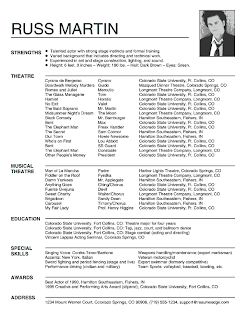DEFINITE ARTICLE (THE) เป็นคำคุณศัพท์ประเภทหนึ่ง ที่ทำหน้าที่เป็นคำนำหน้านาม ทั้งคำนามประเภทนับได้ (Countable Noun) และคำนามที่นับไม่ได้ (Uncountable Noun) ทั้งที่อยู่ในรูปเอกพจน์ (Singular Noun) และพหูพจน์ (Plural Noun) เพื่อให้นามนั้น มีความหมายเฉพาะเจาะจง
วิธีการใช้ THE
1. ใช้ the กับสิ่งที่มีเพียงสิ่งเดียว
the earth the sun the sky
the moon the north the world
the west the White House
2. ใช้ the กับคำนามที่เป็นชื่อเฉพาะต่อไปนี้
ชื่อแม่น้ำ : The Mekhong River, The Nine, The Ganges
ชื่อคลอง : The Bangluang Canal, The SanSab Canal
ชื่อทะเล : The China Sea, The Red Sea
ชื่อทะเลทราย : The Sahara, The Gobi
ชื่อมหาสมุทร : The Atlantic Ocean, The Pacific Ocean
ชื่อเรือ : The Britania, The Andaman Princess
ชื่ออ่าว : The Gulf of Siam
ชื่อช่องแคบ : The Strait of Dover
ชื่อทิวเขา : The Alps, The Rockies
* หมายเหตุ ถ้าเป็นชื่อภูเขา เพียงลูกเดียว ไม่ต้องมี The เช่น Mount Whitney, Mount Fujiyama, Mount Everest
ชื่อหมู่เกาะ : The Philippines, The West Indies
ชื่อโรงแรม : The Central Hotel, The Royal Hotel
ชื่อสโมสร : The Rotary Club, The British Club
ชื่อสมาคม : The Y.M.C.A.
ชื่อหนังสือพิมพ์ : The Bangkok Post, The Nation
ชื่อห้างร้าน องค์การ สถาบัน : The Bangkok Bank Ltd.
ชื่อโรงหนัง ชื่อโรงละคร : The Siam Theatre
ชื่อหนังสือสำคัญทั่วไป : The Bible, The Koran
ชื่อสิ่งก่อสร้างที่สำคัญ : The Taj Mahal
ชื่อประเทศที่มีคำว่า Union, United, Republic: The United States
3. ใช้ the กับคำนามที่กล่าวซ้ำ (repeated nouns) เช่น
Our country has a king. The king is very kind.
4. ใช้ the นำหน้าคำนามที่แสดงลำดับที่ (Ordinal Number) เช่น the first, the second, the fifth, the last
5. ใช้ the นำหน้าคำ adjective ที่แสดงการเปรียบเทียบขั้นสูงสุด (Superlative degree) เช่น
Sue is the most beautiful woman in this group.
Sutep is the tallest boy in this classroom.
6. ใช้ the นำหน้าชื่อสกุล (และเป็นพหูพจน์เสมอ) หมายถึง ครอบครัว เช่น
The Smiths, The Browns, The Wilsons.
7. ใช้ the กับคำ adjective บางตัว ซึ่งใช้แทนคำนาม หมายถึง “พวก....” และถือว่าเป็นพหูพจน์เสมอ เช่น
The blind should be taken care of by the government.
The rich are sometimes selfish.
The brave are always respected.
8. ใช้ the นำหน้าชื่อเครื่องดนตรีต่างๆ เช่น
The flute is on the piano.
Jirayut can play the guitar very well.
9. ใช้ the กับอวัยวะต่างๆ ของร่างกายมนุษย์และสัตว์ เช่น
the head the neck the mouth
the nose the finger the chin
10. ใช้ the กับคำนามที่มีประโยคหรือวลีขยายความ เช่น
The book on the floor is mine.
The man who is standing over there is my teacher.
11. ใช้นำหน้าคำ adjective หรือ adverb ในขั้น Comparative Degree เพื่อทำให้มีความหมาย “ยิ่ง...ยิ่ง...” เช่น
The more I see her the more I love her.
The sooner the better.
12. ใช้ the นำหน้าคำนามเอกพจน์ที่เป็นสัตว์ สิ่งของ จะหมายถึงกลุ่มหรือพวกของสิ่งนั้น เช่น
The dog is a faithful animal.
The tiger is a fierce animal.
13. ใช้ the กับคำนามที่ชี้เฉพาะซึ่งผู้พูดกับผู้ฟังเข้าใจว่าหมายถึง สิ่งของอันใด เช่น
Shut the door! (ผู้ฟังเข้าใจว่าปิดประตูบานไหน)
I had trouble with the car this morning.
* ไม่ใช้ article “the” ในกรณีต่อไปนี้
1. นามพหูพจน์และนามนับไม่ได้ที่กล่าวลอยๆ ไม่เจาะจง เช่น
A woman likes beautiful clothes.
Water is composed of hydrogen and oxygen.
2. เมื่อนามนั้นเป็นชื่อฤดู เช่น
He prefers winter to spring.
3. ชื่อกีฬาต่างๆ เช่น
We play tennis and football every day.
I want to play basketball.
4. ชื่อวิชาต่างๆ ที่ใช้ในความหมายทั่วๆ ไป เช่น
We are learning English.
They are studying Thai.
แต่ถ้าชื่อวิชานั้นทำหน้าที่เป็นคำ adjective ขยายคำนามคำอื่นด้วย จะใช้ the นำหน้าได้ เช่น
I am teaching the English language.
We are in the Thai class.
5. ชื่อประเทศ ทวีป เมือง มหาวิทยาลัย โรงเรียน ถนน เช่น
He is studying at Chulalongkorn University.
Chartchai went to Switzerland last month.
Thailand is in Asia.
6. ชื่อวันหยุดต่างๆ เช่น
He was born on Christmas Day.
Songkran Day is on April 13.
7. หน้าชื่อยศ, ตำแหน่ง, ชั้น หรืออาชีพที่กล่าวนำหน้าชื่อบุคคล เช่น
President John F. Kennedy
Professor Smith
Doctor Saner
Prime Minister Taksin
แต่ถ้าเรียกชื่อ ยศ ตำแหน่ง หรืออาชีพ แทนชื่อจะใช้ the นำหน้าได้ เช่น
The teacher is coming.
The Prime Minister will go to the U.S.A.
Download Exercise Here !!!!
Resources:
1. http://gpa.tmk.ac.th
2. http://www.edufind.com/ENGLISH/grammar/DETERMINERS3.cfm
3. http://sear.toptestcenter.com/





















